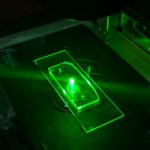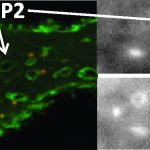
Researchers at IISc led by Saptarshi Basu and Dipshikha Chakravortty have carried out a detailed study on the fate of a large-sized surrogate cough droplet impinging at different velocities on various locally procured cloth fabrics (stole, handkerchief, cotton towel, and surgical masks). A single quantity “ε” was formed by combining the individual effects of pore size and porosity, giving a better insight into the correlation between liquid penetration and fabric properties. The researchers recommend using a cotton towel (with at least three layers) as a face covering if the person cannot use an N95 or a surgical mask. The team also analysed the effect of washing on mask effectiveness, and results show a negligible influence of washing on mask efficacy up to 70 wash cycles.
In another study, Saptarshi Basu’s group collaborated with Narayana Nethralaya Foundation to provide a complete fluid dynamics interpretation of the unexplained droplet generation mechanism from corneal tear film during an eye procedure called non-contact tonometry used routinely for glaucoma detection. The researchers also describe the size scales and velocity ranges of droplets ejected during such procedures, which may help ophthalmologists and medical practitioners conduct these procedures more safely.






